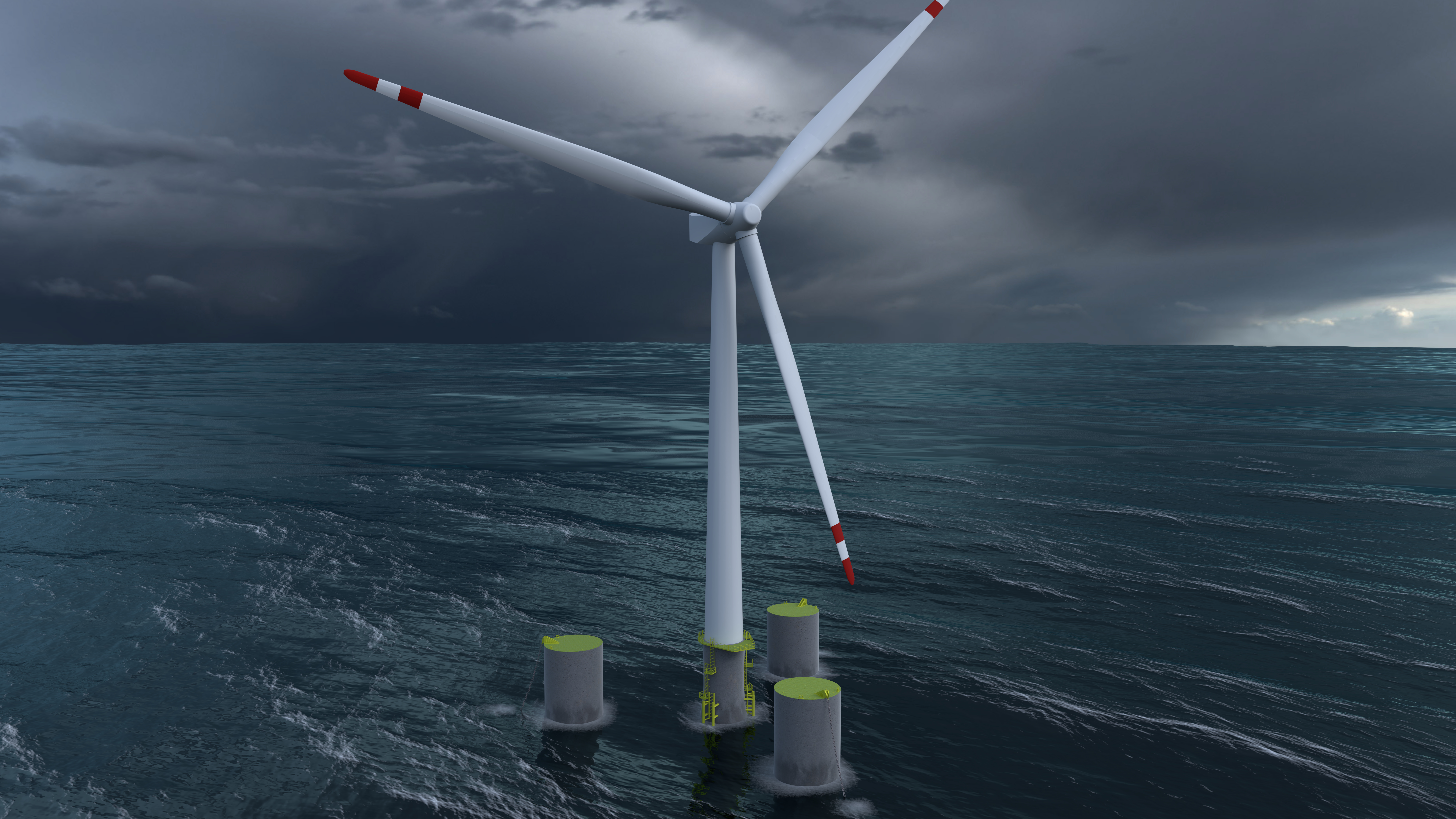# Floating wind
To meet the world’s increasing energy demand, and in particular the demand for renewable energy, floating wind is expected to see a big growth over the coming years. In its Energy Transition Outlook (ETO) for 2020, DNV is estimating that by 2050, the installed capacity of floating wind turbines will reach 255 GW by 2050. That is almost ten times as much as the total capacity of offshore wind (mainly bottom-fixed) in 2019. The ETO further projects that about 20% of the offshore wind market will be floating wind, constituting about 2% of the global power production in 2050.
# OO-Star Wind Floater
Since 2010, the Norwegian engineering firm Dr.techn. Olav Olsen has developed the OO-Star Wind Floater (“OO-Star”), a patented star-shaped semi-submersible floater which easily can be designed for harsh conditions and the ever-increasing wind turbine sizes. The technology is now owned by Floating Wind Solution AS.
Its simple geometry enables cost effective upscaling and provides beneficial motion behavior also in rough seas. It also enables a high potential for mass fabrication, whether it is manufactured in steel or concrete. Read more about the OO-Star development here: https://olavolsen.no/en/business-areas/renewable-energy (opens new window)

The OO-Star Wind Floater, developed by Dr.techn. Olav Olsen (opens new window). The technology is now owned by Floating Wind Solutions AS.
# The need for efficient models
The design of floating wind structures requires CPU-intensive coupled analyses, taking into account the interaction between the aerodynamics of the wind turbine, its control system, the hydrodynamic loads on the floater and mooring and the structural responses of the whole system. This type of analysis is typically denoted hydro-, servo-aeroelastic, reflecting the different loads and responses that needs to be accounted for. There are a handful of software options to perform such analyses, among these are Sintef Ocean’s Sima, and DNV’s Bladed.
In parallel with the coupled analyses, higher fidelity hydrodynamic and aerodynamic models are typically applied to study special effects or to validate the coupled models. With development of ROM, it is envisaged that the coupled analyses could be made more efficient, or that higher fidelity effects could be included more efficiently in the coupled analyses. This would enable faster design processes.
# The potential for estimations of remaining fatigue life
The wind turbine, the tower and the mooring system could all, depending on the type of system, be sensitive to fatigue. With a highly durable floater such as the concrete OO-Star, which easily can be designed for a lifetime of 50-100 years, there is a great potential in life extension of the fatigue sensitive parts of the system. With the development of ROM, measured data could be combined with physics models of the system to estimate key performance indicators such as the remaining life of WTG components, the tower and the mooring system. Such models could further be applied to perform risk-based inspections and repairs. The benefit of applying ROM for this purpose is that the need for expensive sensors on every floater is reduced compared to a solely data-driven approach.
# Existing data
For the Rapid project, it is envisaged that the focus will be on method development based on artificial operation data from coupled analyses. Olav Olsen has data from model tests of OO-Star in the wave tank of Sintef Ocean in 2017, which also might be applied in the development of the methods. As part of the Flagship project, which is supported by EU’s Horizon2020 program, OO-Star will be tested in full-scale with a 10MW+ wind turbine outside Karmøy, Norway from 2022.